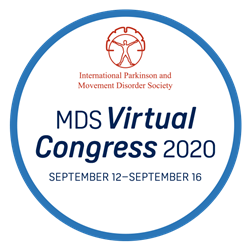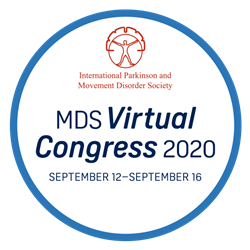
MDS Virtual Congress 2020
DBS should be personalized and it is likely that as technology evolves, we will take a more individualized approach to each patient and each symptom.
MILWAUKEE (PRWEB)
September 11, 2020
A study released today at the MDS Virtual Congress 2020 examines the therapeutic window of stimulus amplitude between directional and omnidirectional leads used in deep brain stimulation.
Deep brain stimulation (DBS) is a therapeutic treatment for Parkinson’s disease. DBS can provide relief of symptoms including bradykinesia, rigidity, tremor, and loss of balance. Leads are implanted in the brain—specifically, the subthalamic nucleus in the study presented here — and connected to a programmable pulse generator. The range of amplitudes that can achieve symptom relief without causing additional side effects is termed the therapeutic window (TW).
Here, a double-blind, randomized comparison study examined the therapeutic window (TW) for both directional and the omnidirectional DBS leads. Participants received omnidirectional stimulation for three months and directional stimulation for three months. During each trial period both the TW of the device and the motor symptoms were assessed. Over 90% of participants experienced an increased TW, averaging near 40%, with the directional leads relative to the omnidirectional leads.
Participants and clinicians also were able to rate their preference for each period of the study. Interestingly, 53% of participants preferred the directional lead period, whereas 59% of clinicians preferred this period. Of participants, 26% preferred the omnidirectional period and 21% had no preference.
Micheal Okun, MD, Medical Director at the Parkinson’s Foundation and Professor and Chair, University of Florida, offers his comment on the study, stating “This study and studies like this will be required to better understand if the use of segmented deep brain stimulation leads in order to ‘steer the current’ will ultimately improve the benefit to side effect ratio for an individual patient. The data suggests that there exists a subset of patients where using this methodology yields a better therapeutic window though the overall outcomes were similar in both groups (segmented leads vs. omnidirectional). DBS should be personalized and it is likely that as technology evolves, we will take a more individualized approach to each patient and each symptom.”
About the MDS Virtual Congress 2020: Meeting participants will learn the latest research findings and state-of-the-art treatment options in Movement Disorders, including Parkinson’s disease. Over 14,000 physicians and medical professionals from more than 130 countries will participate virtually to view over 30 hours of educational content and 1,500 scientific abstracts submitted by clinicians from around the world.
About the International Parkinson and Movement Disorder Society: The International Parkinson and Movement Disorder Society (MDS), an international society of over 8,500 clinicians, scientists, and other healthcare professionals, is dedicated to improving patient care through education and research. For more information about MDS, visit http://www.movementdisorders.org.
Share article on social media or email:

